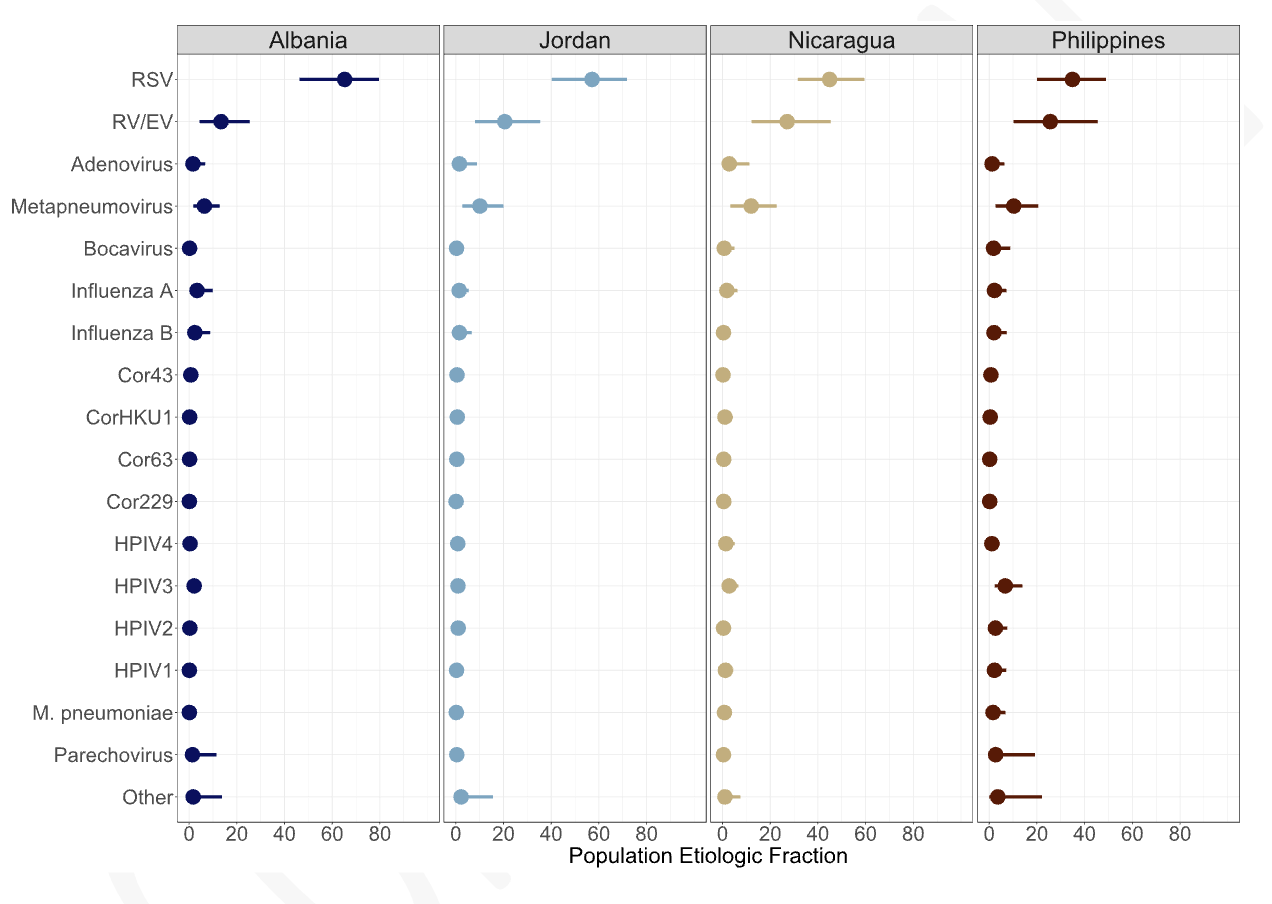*: equal contribution
Abstract
Background
Recent studies explored which pathogens drive the global burden of pneumonia hospitalizations among young children. However, the etiology of broader acute lower respiratory tract infections (ALRI) remains unclear.
Methods
Using a multi-country study (Albania, Jordan, Nicaragua, and the Philippines) of hospitalized infants and non-ill community controls between 2015-2017, we assessed the prevalence and severity of viral infections and co-infections. We also estimated the proportion of ALRI-hospitalizations caused by 21 respiratory pathogens identified via multiplex real-time RT-PCR using Bayesian Nested Partially Latent Class Models.
Results
3,632 hospitalized infants and 1,068 non-ill community controls participated in the study and had specimens tested. Among hospitalized infants, 1,743 (48.0%) met the ALRI case-definition for the etiology analysis. After accounting for prevalence in non-ill controls, respiratory syncytial virus (RSV) was responsible for the largest proportion of ALRI hospitalizations though the magnitude varied across sites—ranging from 65.2% (95% Credible Interval [CrI]: 46.3,79.6) in Albania to 34.9% (95% CrI: 20.0, 49.0) in the Philippines. While the fraction of ALRI hospitalizations caused by RSV decreased as age increased, it remained the greatest driver. After RSV, Rhinovirus/Enterovirus (RV/EV) (range: 13.4%-27.1%), and human Metapneumovirus (HMPV) (range: 6.3%-12.0%) were the next highest contributors to ALRI hospitalizations.
Conclusions
We observed substantial numbers of ALRI hospitalizations with RSV the largest source, particularly in infants aged <3 months. This underscores the potential for vaccines and long-lasting monoclonal antibodies on the horizon to reduce the burden of ALRI in infants worldwide.
